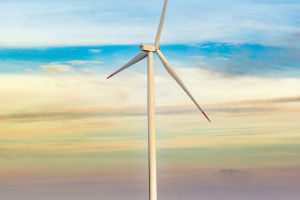As the global demand for renewable energy escalates, wind power has emerged as a prominent clean energy source, garnering significant attention.
At the heart of this sustainable energy revolution lies the wind turbine, a pivotal device responsible for converting wind energy into electrical power.
Despite its pivotal role, the criticality of wind turbine maintenance often remains underestimated. This article delves into the paramount significance of wind turbine maintenance, elucidating why maintenance procedures are indispensable for optimizing performance and ensuring longevity.
Wind turbine maintenance is imperative for ensuring consistent and reliable performance. Situated predominantly in regions abundant with wind resources, wind turbines confront myriad adversities, including inclement weather conditions and environmental challenges.
Without timely maintenance interventions, wind turbines risk succumbing to the harmful effects of wind, rain, dust accumulation, and frost, resulting in compromised performance or catastrophic failures.
Regular maintenance inspections serve as proactive measures to detect and rectify potential issues promptly, thereby upholding the seamless operation of wind turbines.
Furthermore, maintenance endeavors are instrumental in prolonging the operational lifespan of wind turbines.
Given the substantial investments and extensive resources requisite for constructing and installing wind turbines, safeguarding these assets and maximizing their longevity is paramount for investors and operators alike.
Through adherence to systematic maintenance protocols, the onset of equipment aging and wear can be deferred, mitigating the incidence of damages and failures and consequently curtailing maintenance expenditures.
Consequently, this facilitates the extension of wind turbine service life, thereby augmenting return on investment and bolstering the economic viability of wind energy projects.
Moreover, meticulous maintenance practices can significantly enhance the power generation efficiency of wind turbines. Over time, critical components such as blades, gearboxes, and generators are susceptible to wear and dust accumulation, impeding optimal power generation efficiency.
Regular maintenance regimes encompassing tasks such as thorough cleaning of blade surfaces, precision adjustment of blade angles, lubrication of gearboxes, and comprehensive inspection of generator circuits are instrumental in ameliorating power generation efficiency.
By optimizing these crucial components, wind turbine maintenance enhances energy output and mitigates the wastage of valuable wind resources, thereby bolstering the overall efficacy and sustainability of wind energy initiatives.
Additionally, wind turbine maintenance assumes paramount importance from a safety perspective. Often situated in remote areas characterized by high altitudes and intricate terrain, wind turbines necessitate maintenance operations with inherent safety risks.
Rigorous adherence to maintenance schedules ensures that equipment remains in optimal condition, minimizing accidents and safeguarding the well-being of maintenance personnel.
Consequently, prioritizing safety in maintenance practices fosters an environment conducive to sustained wind energy operations.
In summary, wind turbine maintenance is indispensable for ensuring steadfast performance, prolonged operational lifespan, enhanced power generation efficiency, and heightened safety standards of wind energy installations.
Investors and operators must accord due diligence to the maintenance of wind turbines, devising meticulous maintenance plans grounded in scientific principles.
Furthermore, the fortification of equipment management frameworks and the cultivation of proficient maintenance teams are imperative for fostering the sustained and wholesome progression of the wind power industry.
By championing the cause of wind turbine maintenance, stakeholders can catalyze the transition towards a cleaner, greener energy landscape, fulfilling the promise of a sustainable future.


